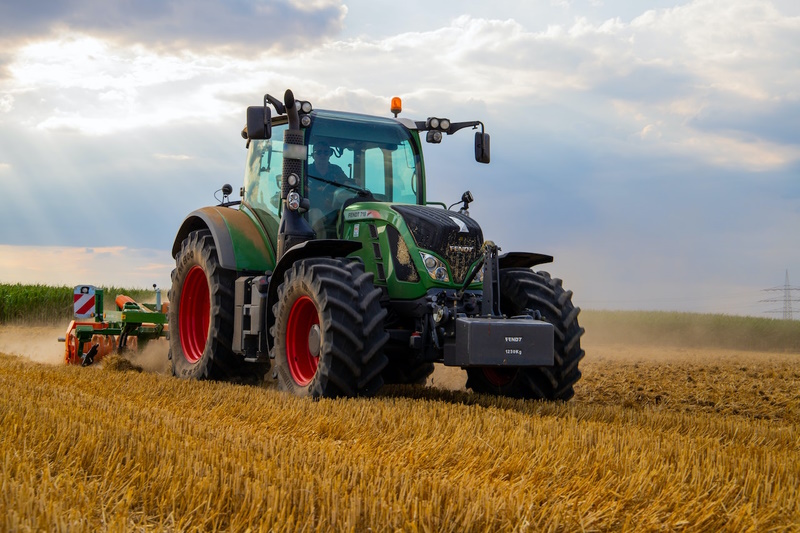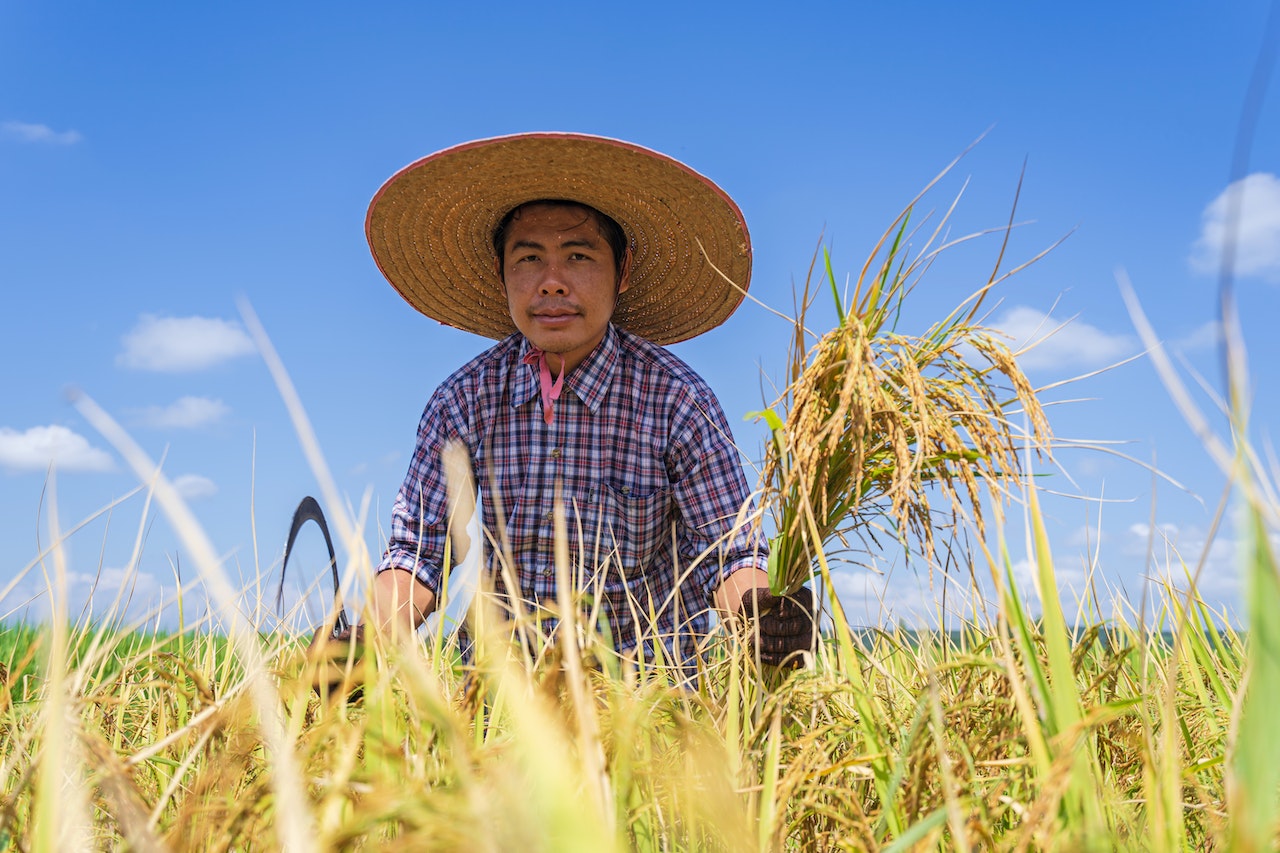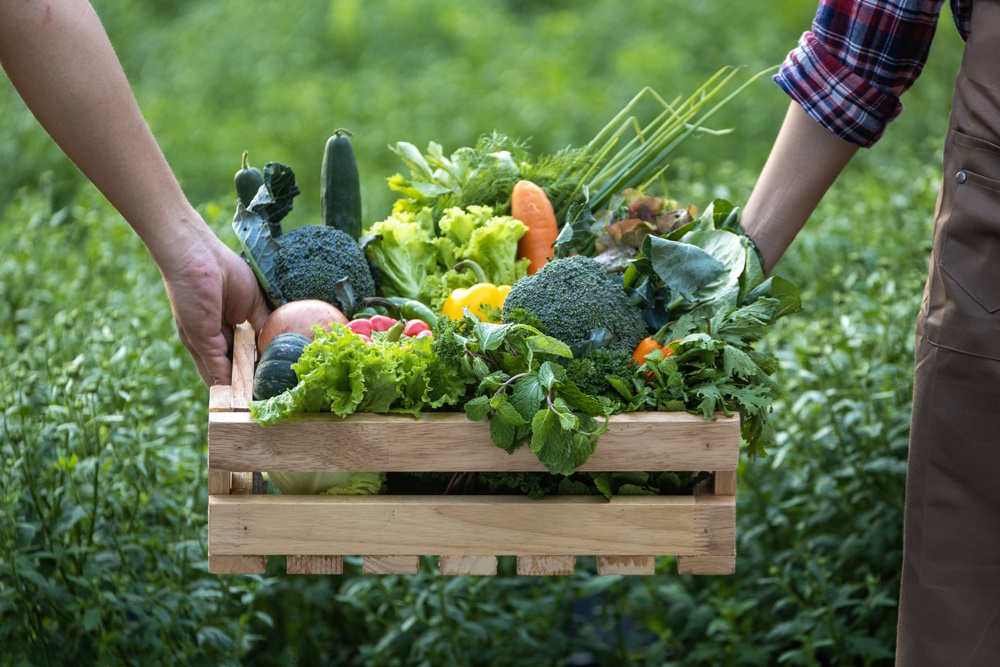Agriculture photography is a unique field of photography that captures the beauty and complexity of agriculture. It involves capturing the essence of farming, livestock, and the environment in which they thrive.
In this blog post, we will explore the various aspects of agriculture photography, and its types, and provide some tips that can help you get amazing photos.
What is Agriculture photography, and its goal?
Agriculture photography is a specialized type of photography that focuses on capturing images related to agriculture and farming. It involves taking photographs of crops, animals, landscapes, and people involved in the agricultural industry.
The primary goal of agriculture photography is to showcase the beauty of agriculture and farming and to tell stories related to this industry. This type of photography can be used for various purposes, including advertising, marketing, education, and art.
The Importance of Agriculture Photography
Agriculture photography plays an important role in showcasing the agricultural industry to the public. Through agriculture photography, people can see the beauty and complexity of the industry, which is often overlooked. It also helps farmers to showcase their products and services to potential customers.
Challenges of Agriculture Photography
Agriculture photography is a highly specialized field that requires a unique set of skills and experience. Photographers who specialize in this area often face a variety of challenges that can make it difficult to capture the perfect shot.
One of the most significant challenges of agriculture photography is the harsh weather conditions that often accompany outdoor shooting. Photographers may have to deal with extreme heat, cold, wind, and rain, which can make it challenging to maintain equipment and capture the desired images.
Another challenge that agriculture photographers face is unpredictable animals. When photographing livestock or wildlife, it can be difficult to predict their movements or behaviors, which can make it challenging to capture the perfect shot.
In addition, some animals can be dangerous, requiring photographers to take extra precautions to ensure their safety.
Changing light conditions can also pose a significant challenge for agriculture photographers. The lighting in outdoor environments can vary dramatically throughout the day, depending on factors such as the position of the sun and weather conditions. Photographers need to be skilled at adjusting their camera settings and adapting to changing light conditions to capture the best possible images.

photo by Depositphotos
To overcome these challenges, agriculture photographers need to be highly skilled and experienced. They must be able to adapt quickly to changing conditions and have a keen eye for capturing the beauty and complexity of agricultural landscapes.
They also need to be patient, persistent, and willing to take risks to get the perfect shot. With the right skills and experience, agriculture photographers can create stunning images that showcase the beauty and importance of agriculture in our world.

photo by Depositphotos
Types of Agriculture Photography
Agriculture photography covers a vast range of subjects, including farming, livestock, landscapes, and food. Each type requires different techniques and equipment. For instance, photographing livestock requires a different approach than photographing landscapes. The common types of agriculture photography include:
-
Landscape photography:

photo by Depositphotos
One of the most popular types of agriculture photography is landscape photography, which focuses on capturing vast fields, pastures, and other agricultural landscapes. This type of photography requires a keen eye for detail and a deep understanding of the natural surroundings.
Landscape photography in agriculture is not just about capturing the beauty of the environment, but it also serves as a way to document the changing landscape and the evolution of agriculture practices over time.
The images captured through landscape photography can be used for various purposes, including advertising, education, and research.
Aerial photography can certainly be a useful tool in agricultural landscape photography. By capturing images from above, aerial photography can provide farmers and researchers with a bird’s eye view of crops, fields, and landscapes that would be difficult or impossible to see from the ground.

Photo by Marc Coenen
Photographs of machines and tools used in agriculture can help document the agricultural process, show how technology has influenced farming, and provide visual aids for educational materials and marketing efforts in the agricultural industry.
Examples of agricultural machinery include tractors, plows, cultivators, seeders, harvesters, hay balers, irrigation systems, and livestock handling equipment.

Photo by Jannis Knorr
-
Wildlife photography:
Wildlife photography involves capturing images of animals in their natural habitat, including livestock, and farm animals. It focuses on the beauty and character of the animals, and how they relate to the agricultural environment.
Wildlife photography in agriculture focuses on capturing the beauty and character of animals, showcasing their unique personalities, and how they relate to the agricultural environment.

photo by Depositphotos
Photographers need to have a keen eye for detail to capture the perfect moment when the animal is in its natural element. They need to be skilled in observing animal behavior, predicting their movements, and finding the best angles to capture stunning images.

photo by Depositphotos
-
Macro photography:
One of the most fascinating types of agricultural photography is macro photography, which involves capturing detailed images of plants and insects. This type of photography requires specialized equipment and a keen eye for detail to capture the intricate beauty of the natural environment.
Macro photography in agriculture is often used to showcase the beauty of crops and the intricate details of plants and insects. The images captured through macro photography can be used for various purposes, such as advertising, education, and research.

Photo by Pixabay
Macro photography can help farmers and researchers identify crop diseases, pests, and other problems that may affect the growth and yield of crops.
One of the challenges of macro photography in agriculture is the technical expertise required to capture the perfect shot. Macro photography requires specialized lenses that allow the photographer to get up close and personal with the subject.
Macro photography in agriculture also requires an understanding of the natural environment and the behavior of insects and plants. Photographers need to know when and where to find their subjects.
Overall, macro photography in agriculture is an exciting and challenging field that requires a combination of technical and artistic skills. It provides a glimpse into the beauty of the natural environment and the intricate details of the crops that sustain us.
The images captured through macro photography in agriculture can help to promote sustainable farming practices and raise awareness about the importance of protecting the natural environment.

Photo by Pixabay
-
Portrait photography:
Portrait photography can play an important role in agricultural photography by showcasing the people who are involved in the agricultural industry. This can include farmers, farm workers, and other individuals who are essential to the production of food and other agricultural products.
Portrait photography can humanize the agricultural industry and provide a glimpse into the lives and stories of the people who work in this field. It can also help to highlight the challenges and opportunities facing the agricultural industry and raise awareness about the importance of sustainable farming practices.

photo by Depositphotos

photo by Depositphotos
In addition, portrait photography can be used to document the history and evolution of the agricultural industry over time, providing a visual record of the changes and advancements that have occurred in this field.

photo by Depositphotos
Overall, portrait photography can be a powerful tool for telling the stories of the people who make our food and other agricultural products possible, and for promoting a greater understanding and appreciation of the agricultural industry as a whole.

photo by Depositphotos
-
Food photography
Food photography in agricultural settings can be a great way to showcase the beauty and diversity of the food that comes directly from the land.
Food photography captures the beauty and appeal of food, making it look visually enticing and appetizing. This type of photography is often used in advertising, cookbooks, menus, and other food-related media.

Photo by ROMAN ODINTSOV
In agricultural photography, food photography can help to highlight the connection between agriculture and the food we eat. It can also promote the use of locally grown and produced food, which supports local farmers and economies.
Food photography can also be used to document the entire process of food production, from the farm to the table. This includes capturing images of farmers working in the fields, crops growing, and the harvesting process. By documenting the entire process, food photography can help to educate people about where their food comes from and the hard work that goes into producing it.

Photo by Pineapple Supply Co.
Agriculture photography tips
If you’re interested in agriculture photography, here are some tips to help you capture the perfect shot:
-
Choose the right gear:
Choosing the best gear for agriculture photography depends on several factors, including the type of images you want to capture, the shooting environment, and your budget. However, here is some recommended gear that can help you capture high-quality images in agricultural settings:
- Camera: A high-quality DSLR or mirrorless camera is essential for agriculture photography. Look for a camera with a fast autofocus system, a high-resolution sensor, and good low-light performance. Popular options include the Canon EOS 5D Mark IV, Nikon D850, and Sony A7R IV.
- Lenses: The right lenses are critical for capturing sharp, detailed images in agricultural settings. A versatile zoom lens like a 24-70mm or 70-200mm is a good choice for capturing a range of subjects, from wide landscapes to close-ups of animals or plants. You may also want to consider a macro lens for capturing detailed shots of plants and insects.
- Tripod: A sturdy tripod is essential for stability when shooting in challenging weather conditions or low light. Look for a tripod with a high weight capacity and good height adjustability.
- Filters: Depending on the lighting conditions, you may want to use filters to adjust the exposure or color temperature of your images. A polarizing filter can help reduce glare and enhance colors, while a neutral density filter can help you shoot at slower shutter speeds in bright light.
- Accessories: Other essential accessories for agriculture photography include a camera bag for transport and protection, extra batteries and memory cards, and a cleaning kit for your camera and lenses.
Ultimately, the best gear for agriculture photography will depend on your individual needs and preferences. It’s important to invest in high-quality gear that can withstand the challenging conditions of agricultural environments and help you capture the best possible images.
-
Plan your shoot:
Planning is an essential part of any photo shoot, and agriculture photography is no exception. Start by researching the location and asking about the type of crops and their involved activities.
This planning allows you to find out the time to start your shooting. For example, the best time to photograph crops is during the growing season when they are at their peak. This can vary depending on the crop, but generally, it is best to photograph them when they are full and lush.
Another example is if you want to capture a field of sunflowers, you might want to plan your shoot during the peak blooming season.
If you want to capture people or animals working in the fields, then it is best to shoot during the times when they are active. For example, if you want to photograph a farmer harvesting a crop, then it is best to shoot during the harvest season when they are in the fields.

Photo by Sorapong Chaipanya
-
Focus on the details:
Agriculture photography often involves capturing the intricate details of crops and animals. To do this, get up close to your subject and use a macro lens if possible. This will allow you to capture the texture of plants or the details of insects. You might also try focusing on specific features of animals, such as their eyes or fur.
-
Capture the seasons:
Agriculture photography can showcase the changing seasons and how they affect crops and landscapes. For example, you might capture the lush green of spring, the golden colors of fall, or the snowy landscapes of winter. Look for ways to capture the unique features of each season and how they impact agriculture.
-
Use natural light:
Natural light is often the best light for agriculture photography, you can get diffused natural light at the following times:
- Golden Hour: The golden hour refers to the period of time just after sunrise or just before sunset when the light is soft, warm, and has a beautiful golden quality. This is a great time to capture agricultural landscapes, fields, and crops as the low angle of the sun can create interesting shadows and depth in the images.
- Overcast days: On overcast days, the light is diffused and even, which can be ideal for shooting agricultural subjects. This is because the soft light can bring out the colors and textures of the fields and crops.
On the other hand, midday can be a good time to shoot if you want to capture strong shadows and contrasts.
-
Use a tripod:
A tripod can help you get a steady shot, especially when using slow shutter speeds or when capturing landscapes. It can also help you stay in one spot and take multiple shots of the same subject, making it easier to choose the best photo later. If you don’t have a tripod, try resting your camera on a stable surface like a fence or a rock.
-
Find unique perspectives:
To create more interesting and unique photos, try experimenting with different angles and perspectives. This could mean getting down low to capture the angle of the crops or getting up high to capture the sweeping landscape. Look for ways to capture your subject from a new and interesting perspective.
-
Tell a story:
Agriculture photography can tell a story. Consider the composition of your photos and how they work together to tell a story. For example, you might capture a farmer working in a field, or a group of animals grazing in a pasture. Look for ways to capture the essence of the subject and the story it tells.
-
Study the work of famous photographers
Exploring and studying the work of famous photographers can be incredibly helpful for anyone interested in photography, whether they are a beginner or an experienced professional.
Seeing the work of photographers who are widely regarded as masters of their craft can be incredibly inspiring. It can help to spark new ideas, challenge your creative boundaries, and motivate you to try new things.
By studying the work of famous photographers, you can learn a lot about the technical aspects of photography. You can observe how they use lighting, composition, color, and other elements to create their images, and you can apply these techniques to your own work.
-
Be patient:
Patience is key when it comes to agriculture photography. Animals and crops may not always cooperate, and it may take time to capture the perfect shot. Be patient and keep shooting, and eventually, you’ll capture the perfect photo.
-
Edit your photos:
Finally, once you’ve captured your photos, edit them to improve the composition, adjust the exposure and color, and sharpen your images. Use editing software to remove distractions or blemishes from your photos. Editing can help you create a polished final product that showcases the beauty of agriculture.

Photo by Mehmet Turgut Kirkgoz
Famous Agriculture Photographers
There are many examples of stunning agriculture photography. Photographers such as Jim Richardson and George Steinmetz have captured breathtaking images of agriculture. In this section, we will showcase some of their work.
Dean Riggott

photos @ Instagram
Jim Richardson

photos @ Instagram
George Steinmetz

photos @ Instagram
Todd klassy

photos @ Instagram
Conclusion
Agriculture photography is a fascinating and vital field of photography that captures the beauty and complexity of the agricultural industry through stunning images. As a form of documentary photography, agriculture photography seeks to capture the essence of agriculture in a way that is visually appealing and informative.
With the right equipment, techniques, and skills, photographers can capture incredible images that help the public to understand and appreciate the agricultural industry.
Thanks for reading, I hope you enjoyed the article, in case you have any questions just drop them below & I will be happy to answer you.
The featured photo by Depositphotos
If you enjoy the site, don’t forget to subscribe, we will only inform you when a new article is posted.









Hey Amin, this is a phenomenal guide to agricultural photography! I live in Alberta which means any time we drive outside of Calgary, we’re instantly met with fields of canola and other farms. I always wanted to capture their beauty, but unfortunately, I’m not a great photographer and the photos don’t turn out as good as I expected. My question is, are we able to get away with using an iPhone camera instead of a professional one?
Thank you for your kind words about my guide to agricultural photography! I’m glad to hear that you found it helpful in capturing the beauty of the farms and canola fields in Alberta.
To answer your question, while a professional camera can provide more control over settings such as aperture, shutter speed, and ISO, it is certainly possible to capture great agricultural photos with an iPhone camera or other smartphone camera. In fact, smartphone cameras have improved significantly in recent years and many offer features such as portrait mode, low-light mode, and high dynamic range (HDR) that can help produce stunning images.
One advantage of using an iPhone or other smartphone camera for agricultural photography is that it is lightweight and portable, making it easy to carry around and capture photos on the go. Additionally, smartphone cameras often have built-in editing tools and apps that can help enhance and edit your photos without the need for additional software or equipment.
However, it’s important to keep in mind that there are some limitations to using a smartphone camera for agricultural photography. For example, smartphone cameras typically have smaller sensors than professional cameras, which can limit their low-light performance and dynamic range. Additionally, while smartphone cameras can produce high-quality images, they may not have the same level of detail and resolution as a professional camera.
In conclusion, while a professional camera can offer greater control and higher image quality, it is certainly possible to capture great agricultural photos with an iPhone or other smartphone camera. With some basic knowledge of composition, lighting, and editing, you can use your smartphone camera to capture stunning images of the farms and fields around you.
Agriculturaral photography is absolutely beautiful.
There are so many different pictures you can capture. Do you solely specialize in agricultural photography?
You explained in detail how your shot is supposed to be set up and included key points and instructions. I also didn’t know that farmers benefit from these shots as it helps aid them in diseases and pest control.
Thanks for sharing.
Thanks for your comment, glad you like the article.